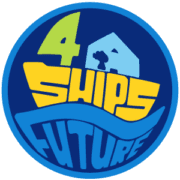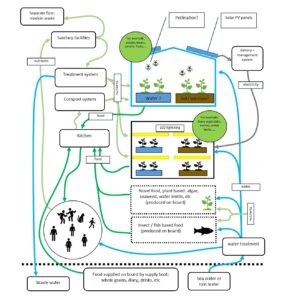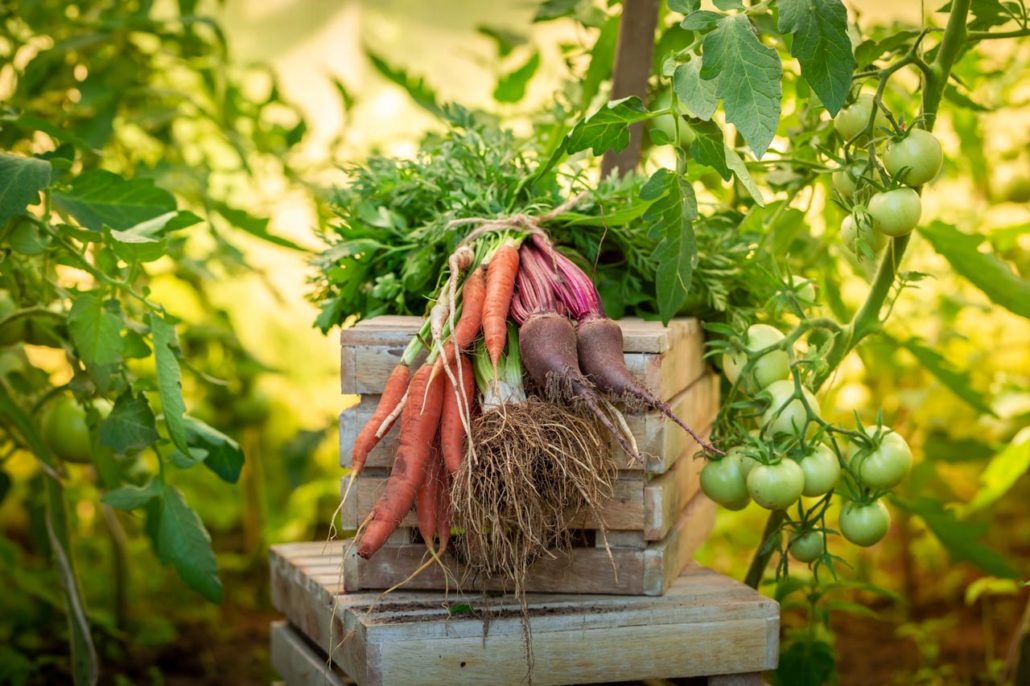A greenhouse on a ship
A cultivation system providing food for a community living on a ship? This is one of the challenging questions for Ships for a Future. A subject that, as far as I know, has not been studied before in detail. Just imagine: a greenhouse on the deck of a ship sailing the ocean with people working in it. Real sea farmers.
The design of such a system will require research. Furthermore, food requirements need to be studied in a multidisciplinary way. I would like to involve students of the Wageningen University who follow the Academic Consultancy Training. I believe this to be a challenging assignment for the students.
A few questions concerning a cultivation system on a ship: how much plant-based food can be produced for a certain number of people? What is the nutritional value? Can the cycle of nutrients be closed within the system?
The picture above shows a possible cultivation system on board of a ship. In Dutch we say: “een plaatje zegt meer dan duizend woorden” (one picture is worth a thousand words). The chart shows the various flows: nutrients, water and electricity. Vegetables are grown on deck in a greenhouse. Below deck vertical farming techniques are used. Cultivating fish and algae is also an option. Although this design will need to be improved, flow charts like this do help to analyse and understand systems.
Food is culture and fuel for writing
Food involves more than growing it on a ship. Food relates to laws, economics, cultural aspects and energy requirements.
Is it possible to accelerate the introduction of novel foods, like water lentils or algea, in the food chain on a ship? National or European laws can restrict the use, but do these also apply on a ship? Especially a ship sailing in international waters. Food for thought.
For example, the European Food Safety Authority (EFSA) has recently officially approved water lentils, so there are chances for eating water lentil hamburgers on board of a future ship in European waters. If you want to read more about these fast growing protein rich plants visit: Water lentils authorised for production and consumption in EU
Growing vegetables requires labour, knowledge and experience. The question is: who will do the labour on board? Planting seeds, providing nutrients to the plants and finally harvesting them. Are all the members of the community involved in these tasks or only a few sea farmers who get paid? Another option might be the use of robots. On the main land we have organised the supply chain: farmer, transportation & storage company, supermarket and consumer. On a ship we have the chance to rethink the whole chain. Knowledge and experience are other aspects. It would make sense to ensure that members know how to cultivate plants. Therefore agricultural experts should design an on-board cultivation information system which is accessible to all the ship members.
Food is culture. Eating a meal together creates social bonds. The magic happens in the kitchen. The cook can make the difference between happy community members or a revolt. The question: is there a chef, who gets paid, or does every ship member participate in preparing tasty water lentil burgers or some other appetizing dish? Let a creative cook write down healthy food recipes or make delicious food videos so others can learn how to cook dishes for the community.
A future ship remains on the ocean, it does not sail from harbour to harbour. What are preferable marine and climate conditions? You can imagine that growing vegetables in an Arctic environment is quite impossible. The coast of Spain is preferable, but what are the marine conditions like in parts of the Atlantic?
Food is not just about the technical implications. It also is a great subject to talk about, because it relates to so many human aspects. Writing a chapter for Ships for a Future about the cultivation system and the various human aspects involved, promises to be a great experience. Food is fuel for words.




